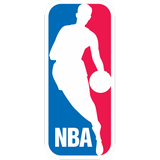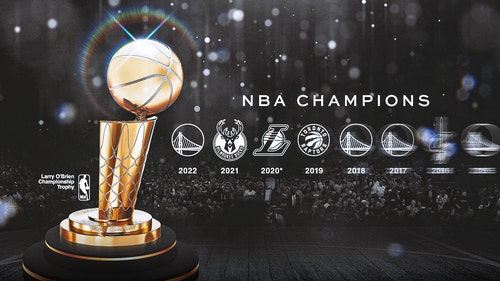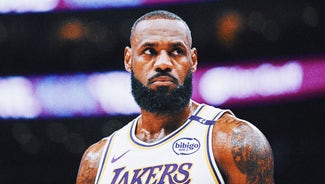
Non-BCS players getting new look in NBA draft
Larry Bird still likes the small towns, the small schools and all those guys who beat up on the big boys.
It looks like the NBA is taking notice.
The array of non-BCS draft prospects on this year's list ranges from All-Americans Jimmer Fredette and Kawhi Leonard to blue-collar guys such as Butler's Matt Howard and even those coming from NBA royalty such as Pepperdine's Mychel Thompson.
The Pacers president wants to see every one of them.
''If you go back and look at NBA history, there have always been mid-major guys who have made it,'' the Indiana State grad said Wednesday. ''... There are a lot of guys that grow three or four inches and they become really good players, late-bloomer types, and they can play here.''
Bird helped prove it by becoming one of the greatest mid-major alums in league history.
Plenty has changed since Bird's rookie season, 1979-80.
A reduction in NCAA scholarship limits has allowed non-BCS schools to pick up some players the big schools can't take. Others select smaller schools so they get more playing time. Summer AAU programs have regularly pitted many of today's college stars against one another, proving to everyone, regardless of school size, that they can compete against the best.
Colleges have seen this script play out for over two decades with the emergence of mid-major programs such as Butler, George Mason, Gonzaga, Virginia Commonwealth and Xavier.
Next up: The NBA.
Fredette, last year's national player of the year from Brigham Young, and Leonard, the San Diego State star, are expected to be drafted in the top 20.
But this year's list of draft hopefuls goes far deeper than just a couple of stars.
Butler's tandem of Howard and Shelvin Mack have been busy attending workouts all over the country. Four mid-major players were among the six players working out in front of Bird on Thursday. Thompson, the son of former No. 1 pick and two-time NBA champ Mychal Thompson and brother of Washington State early entry draft prospect Klay Thompson, was another one in Indy.
Leonard has not been in town yet, but two other San Diego State players, Malcolm Thomas and Billy White have.
The potential lockout could speed up the process, too, because some of this year's top underclassmen decided to stay in school. That could open up some spots in a two-round draft for players such as Howard or Mychel Thompson to get selected.
Either way, Bird is taking advantage of this opportunity. He's brought in 12 mid-major players since May 26, and Kenneth Faried of Morehead State, Andrew Goudelock of College of Charleston and Charles Jenkins of Hofstra are scheduled to work out in Indy on Friday.
That would mean 15 of the 48 players who have come to Indy were from non-BCS schools.
It's not just Bird, either.
''The reason we're bringing a lot of these guys in is a lot of these guys we haven't seen as much as we would like and we want to put them in different matchups,'' Minnesota assistant general manager Tony Ronzone said Thursday. ''Who knows where we'll be in the draft? We could be all over so we want to be prepared on certain guys that we don't have a good feel on.''
Those under the microscope have a different take.
''I think you've seen more success with teams in those positions and if those teams are having success, scouts figure there must be something good about these guys,'' Howard said after one of his 10 scheduled workouts. ''I think some of the best players we played this year were from smaller schools.''
Bird acknowledges NCAA tournament success can help improve the draft stock of lesser-known players.
But there's more to it than winning games on college basketball's big stage.
Jake Kelly, the Indiana State guard who transferred from Iowa, contends the talent gap between big schools and small schools is shrinking rapidly. Morehead State's Demonte Harper credits the changes to improved mid-major coaching.
And Purdue coach Matt Painter, who worked previously at Southern Illinois, thinks experience has become the great equalizer.
''Some of the guys who aren't as highly recruited are able to grow into their (college) role,'' Painter said. ''It's not as important how good you are when you're 17 or 18 - unless you're one of those guys leaving early. For most guys, it's really about how good you are at 21 or 22 or even later than that and some of those mid-major guys really develop.''
Bird has seen it.
He remembers a 6-foot-1 Scottie Pippen going to Central Arkansas so he could play guard and be the team manager. Between his senior year of high school and freshman year of college, Pippen grew two inches. He grew two more inches during his sophomore year, moving to forward. Eventually, he became Michael Jordan's sidekick during the Chicago Bulls dynasty.
The stories are as legendary as Bird's allegiance to small-town USA.
''Yep, I sure do,'' he said when asked about having a special place in his heart for players from smaller schools. ''Truthfully, I try to get them in here and give them a workout.
But to Bird, this is all business. Last year, he took Fresno State's Paul George in the first round, and if the draft projections are right, Bird could go that route again.
Some have the Pacers taking Fredette or Faried with the No. 15 pick.
They're not the only guys Bird is interested in.
''Look, if these guys are playing with a real good player, a guy like Jimmer, he probably makes them look better than what they are,'' Bird added. ''But they look at how Jimmer works and they get a lot of confidence and they get better, it brings a lot of confidence to the whole team. That's what you're seeing.''
---
Associated Press Sports Writer Jon Krawczynski in Minneapolis contributed to this article.








